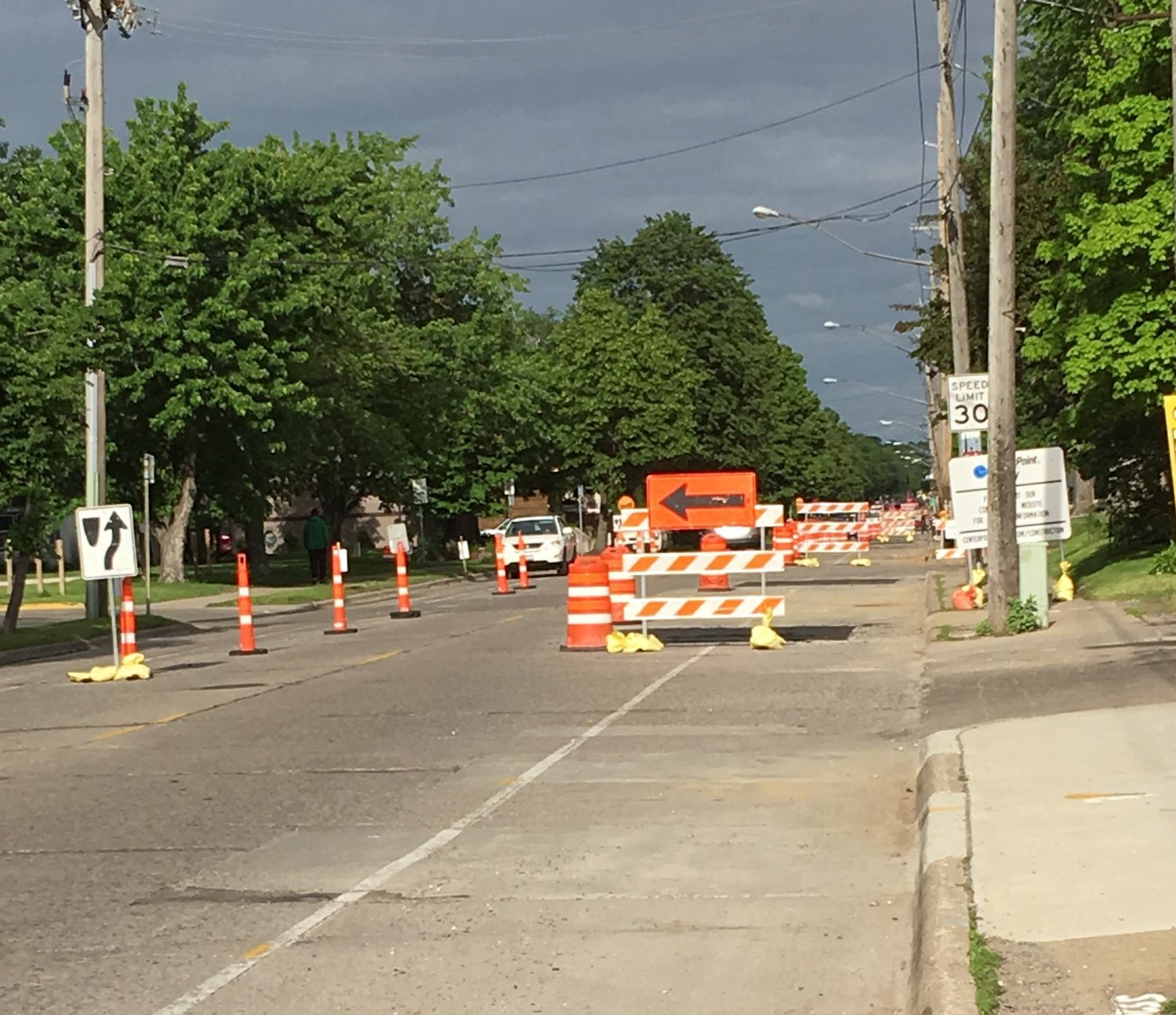We have all driven, biked, or walked down a street that appeared wider than the traffic it served. Extra space proliferates within the area for vehicles while the pedestrian and bicyclist are forced onto a small, cracked sidewalk or into the street dodging parked cars. We constantly wonder why the road could not be redesigned to accommodate a better distribution of users. Some cities have begun to make a commitment to changing these conditions through a program called Complete Streets.

Uninviting section of Marshall Street NE in Minneapolis for pedestrians or bicyclists
Cities that have adopted a Complete Streets Policy make it a priority to update their roads to work for all users. When cities adopt a Complete Streets program, departments understand they cannot return to their old plans when it comes time to work on a stretch of road. They must look at all modes of travel and redesign the street, if possible, to better fit bicyclists, pedestrians, and lastly, the car.

Bicycle and pedestrian friendly section of 2nd Street South
The City of Minneapolis began outreach efforts for their Complete Streets Policy in 2015. They involved various stakeholder groups, internal and external committees, and attended numerous City advisory committee meetings to gather feedback. The policy was adopted in May of 2016 and has been used on numerous projects to date. One such example is the 18th Avenue project in the Northeast neighborhood. The project stretches from Monroe Street NE to Johnson Avenue and includes a full removal of the existing street and redesign of the layout. The two-way street currently has a small sidewalk, narrow boulevard and parking on both sides.

Project area shown in red for the 18th Avenue NE reconstruction
New pavement, curb and gutter, and driveways will be reinstalled, along with some new design features. The 60-foot-wide cross section (Monroe Avenue NE to Central Avenue NE) shows a new 10-foot-wide sidewalk/bike path on the right side and a 5.5-foot-wide boulevard for trees. The left side has a 5-foot-wide sidewalk and a 5.5-foot-wide boulevard for trees. Parking will be restricted to the left side only, allowing two-way traffic on the right. The 70-foot-wide cross section (Central Avenue to Johnson Avenue NE) allows for even more pedestrian amenities. The design mimics the 60-foot-wide cross section; however, the right side allows for a separated 8-foot-wide bike path and 5-foot-wide sidewalk.

Cross section showing the area devoted to each mode of travel
Funding for the $5,910,000 project is a combination of MSA funds, net debt bonds, street assessments (against the adjacent property owners), lighting assessments, stormwater revenue and water revenue. The two biggest funding sources are MSA funds and net debt bonds.

18th Avenue NE looking east from Central Avenue as construction begins
Construction is already underway for this street project and is estimated to take two construction seasons to complete. While it inconveniences residents that use this road daily, the result is greater than the hassle. The separated bike path is safer than the existing conditions requiring bikers to share the road, not delineated as a sharrow, with vehicles. It will encourage more bikers to use the path that otherwise would have avoided it because of safety concerns. Many residents living on 18th Avenue see this as a win for bicyclists and look forward to the new activity they hope to see in 2018. Thanks to Minneapolis’ new Complete Streets Policy, more streets are being built for the multi-modal travelers that use them.
Cross posted on www.theplanninglady.com (5/29/17)
